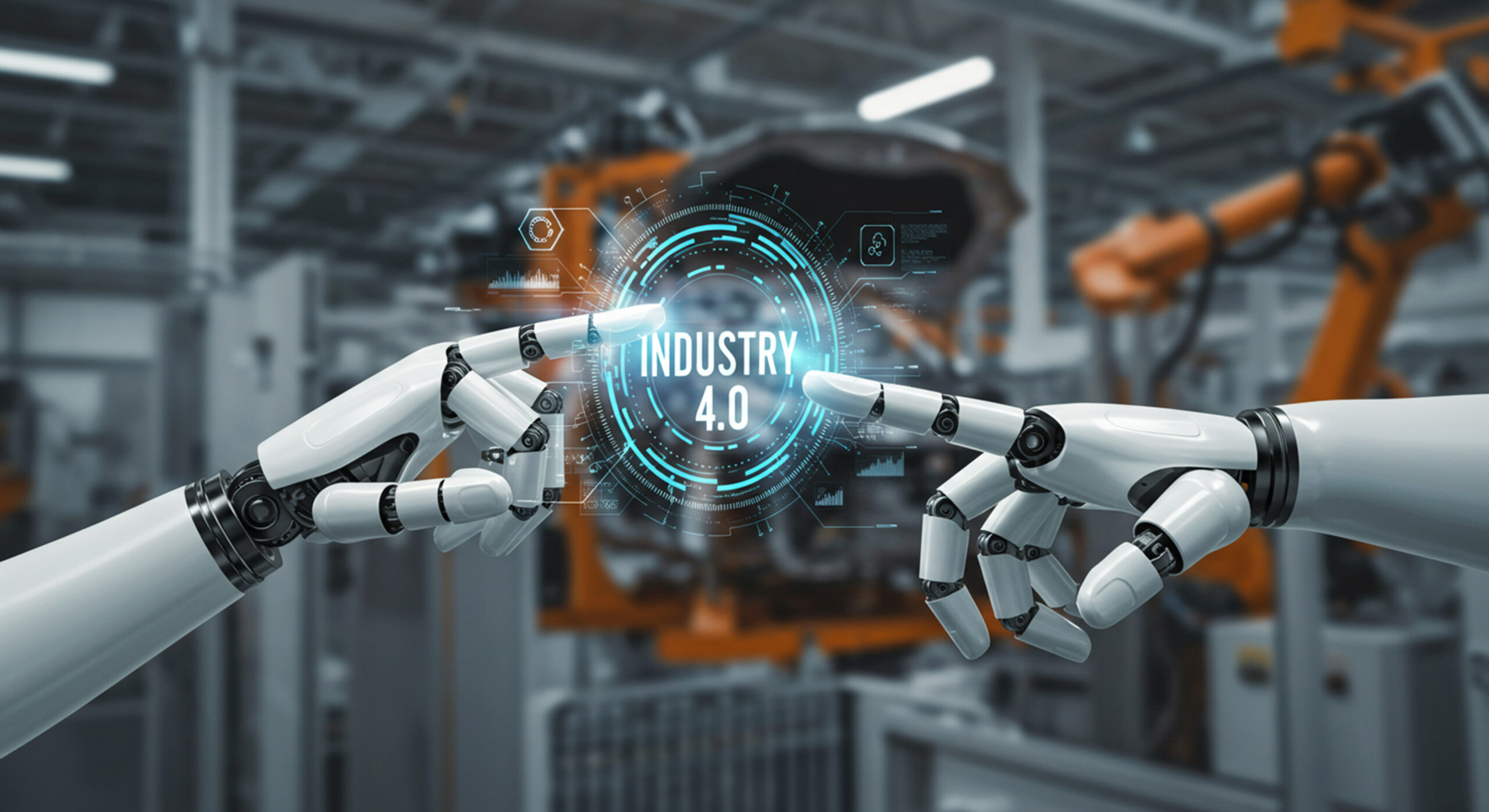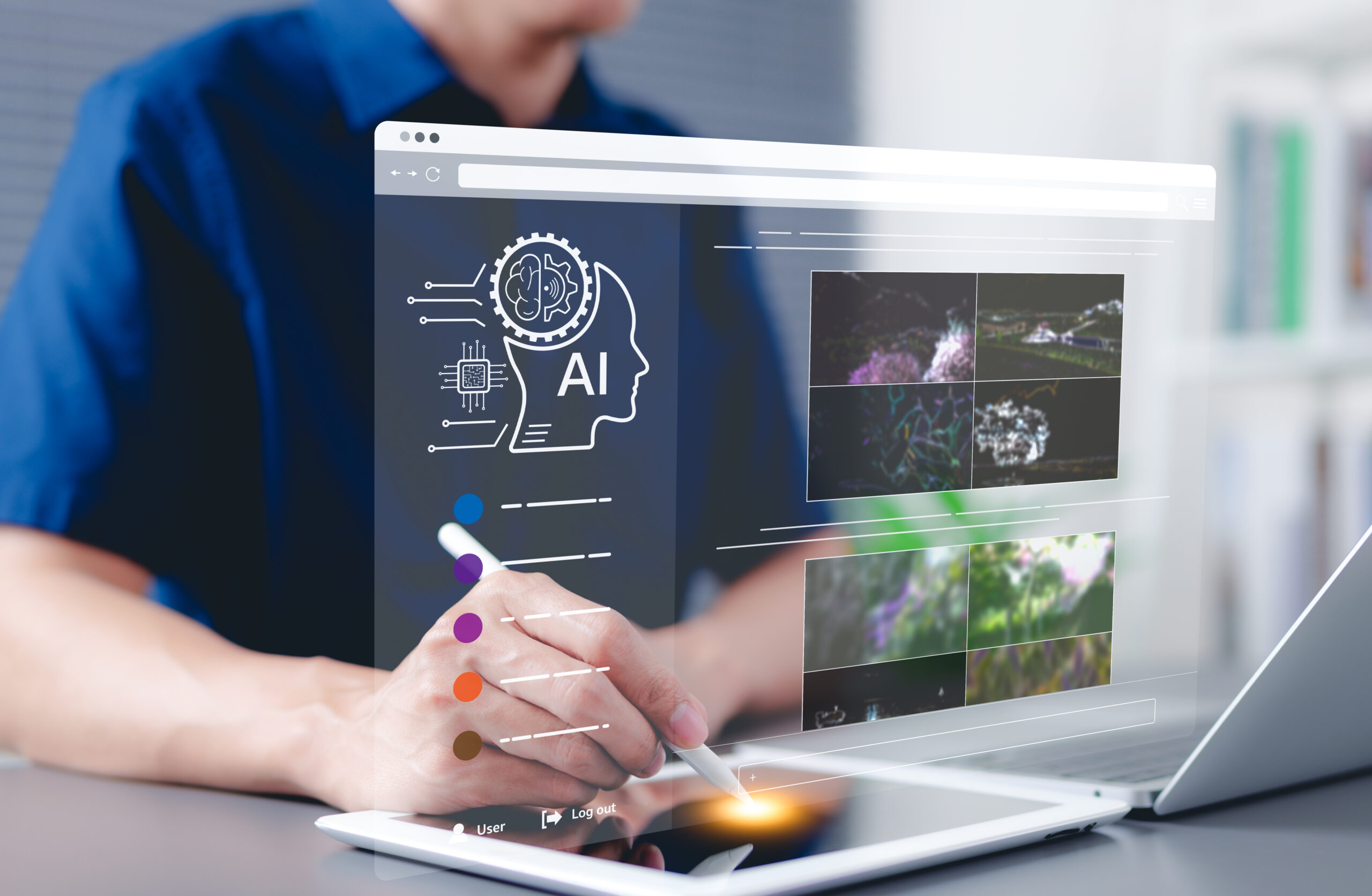How are Industry 4.0 technologies like IoT and AI revolutionizing the architectural, civil, and mechanical sectors? What role do Industry 4.0 technologies play in predictive maintenance and smart infrastructure development? Are your workflows ready for the shift that Industry 4.0 technologies are bringing to engineering and construction?
In this comprehensive exploration of 4.0 technologies, we examine how innovations like IoT, artificial intelligence, and robotics are redefining traditional processes across the architectural, civil, and mechanical engineering sectors. From smart buildings and autonomous machinery to AI-driven design and predictive maintenance, these technologies are not just enhancing productivity—they’re completely transforming how infrastructure is conceived, built, and maintained.
The blog delves into real-world applications and sector-specific impacts, such as generative design in architecture, digital twins in mechanical engineering, and AI-powered project management. It also addresses the challenges of data security, workforce upskilling, and system interoperability. For firms and professionals navigating today’s dynamic landscape, adopting 4.0 technologies isn’t optional—it’s foundational to staying competitive in the evolving world of construction and engineering.
The fourth industrial revolution is redefining how industries operate, communicate, and evolve. The changes are particularly disruptive to the engineering and construction fields, where innovative 4.0 technologies are turning traditional workflows upside down.
Powered by an impressive ecosystem of smart technologies such as the Internet of Things (IoT), artificial intelligence (AI), and robotics, companies enjoy unprecedented efficiencies, remarkable predictive capabilities, and sustainable solutions that were once thought impossible.
This digital wave isn’t just a minor ripple; it’s a tsunami sweeping across architectural, civil, and mechanical engineering sectors. In response, forward-thinking firms are increasingly adopting new tools to remain competitive in an ever-changing landscape.
In this article, we’ll explore how Industry 4.0 is profoundly influencing three essential pillars of the architecture, engineering, and construction industry. From smarter, more intuitive design processes to autonomous construction sites that seemed like science fiction just years ago, integrating these Industry 4.0 technologies represents more than just a passing trend—it’s the very foundation upon which we’re building a smarter, more efficient future.
Table of Contents:
Internet of Things (IoT) in Engineering and Construction
Artificial Intelligence (AI) and Machine Learning
AI for Project Management and Scheduling
AI in Quality Assurance and Safety
Automation in Mechanical Engineering
Cross-Sector Challenges and Opportunities
Internet of Things (IoT) in Engineering and Construction
Have you noticed how buildings are becoming more responsive to our needs? Perhaps the most visible and impactful application of IoT in architecture and civil engineering is the development of smart infrastructure. Modern buildings embedded with sophisticated IoT sensors can now self-monitor structural performance and environmental conditions in real time, providing valuable data streams that were previously unimaginable.
Take, for example, advanced HVAC systems, which can automatically adjust based on occupancy patterns and ambient temperature fluctuations. These significantly reduce energy consumption while maintaining optimal comfort. According to comprehensive research by McKinsey, these IoT applications can reduce building energy usage by up to 20%—a substantial improvement that benefits both the environment and the bottom line.
Predictive Maintenance
IoT is also revolutionizing how we approach and execute maintenance across various sectors. In both civil and mechanical engineering, carefully placed sensors embedded in bridges, elevators, HVAC systems, and heavy machinery collect and analyze performance data. This wealth of information allows for predictive maintenance, an innovative practice that identifies potential failures long before they actually happen.
Instead of relying on traditional fixed maintenance schedules that might address problems too early or too late, engineers can now act based on real-time insights and historical performance patterns. This proactive approach reduces costly downtime, helps avoid potentially catastrophic failures, and significantly cuts long-term maintenance costs across the board. A comprehensive Deloitte study found that well-implemented predictive maintenance programs can reduce overall maintenance costs by 18–25% while cutting unplanned downtime by up to 50%.
Asset and Resource Management
IoT-enabled inventory management systems on busy construction sites are proving indispensable for modern operations. Project managers can track inventory levels in real time by strategically attaching sensors to materials, equipment, and tools. They can also prevent theft or misplacement while significantly reducing waste throughout the project lifecycle. These intelligent systems also improve logistics and supply chain efficiency by automatically reordering supplies when stocks run low, ensuring that projects stay on schedule without costly delays.
This impressive level of automation allows teams to focus their valuable time and energy on higher-value tasks while enhancing transparency and accountability across the entire supply chain. It also helps contractors continuously learn from project data to improve resource allocation and plan future builds, creating a virtuous cycle of ongoing optimization.

Experience Our No-Obligation Trial: Uncover How Our Proven Engineering Outsourcing Services Can Elevate
Your Business


Experience Our
No-Obligation Trial: Uncover How Our Proven Engineering Outsourcing Services Can Elevate
Your Business
Artificial Intelligence (AI) and Machine Learning
AI is bringing truly profound changes to architectural and structural design processes. Generative design software, powered by sophisticated machine learning algorithms, now enables architects to input specific goals (such as material preferences, cost constraints, and spatial requirements) and receive hundreds of optimized design alternatives within minutes instead of weeks. Autodesk’s revolutionary generative design tool exemplifies this approach. It has been successfully used in real-world projects such as the innovative design of Airbus’ lightweight cabin partitions, resulting in significant material and fuel savings.
In civil and mechanical engineering fields, AI-driven simulations can accurately predict how various structures will behave under stress, load variations, and extreme environmental conditions that would be difficult or impossible to test physically. Engineers can leverage these powerful models to test multiple variables simultaneously in a virtual environment before committing resources to physical prototypes. This substantially reduces risk, cost, and development timelines while improving overall outcomes.
AI for Project Management and Scheduling
AI is increasingly becoming essential for managers juggling multiple priorities, resources, and constraints in complex projects. Advanced algorithms can now accurately forecast resource needs, track dependencies between tasks, and predict potential delays before they impact the critical path.
In addition to scheduling improvements, machine learning tools help identify and assess risks early in the process, when mitigation is most cost-effective. By analyzing historical data from similar projects, AI can offer data-backed recommendations that dramatically improve decision-making. This constant influx of actionable insights encourages teams to continuously learn from past projects, applying those lessons to optimize future endeavors.
AI in Quality Assurance and Safety
In the construction sector, AI is helping teams identify potential errors and issues before they become costly problems requiring extensive rework. Drones equipped with sophisticated computer vision can methodically scan job sites and compare actual progress to digital plans and BIM models, automatically flagging inconsistencies. AI-based anomaly detection systems can also uncover subtle flaws in welding quality or structural joints that even experienced human inspectors might overlook during routine inspections.
On the critical safety front, AI-powered wearables and monitoring systems can continuously track workers’ vital signs, fatigue levels, and movement patterns throughout the workday. Suppose a worker appears to be at risk of injury due to fatigue or enters a hazardous area without proper protection. In that case, the system can immediately issue alerts or even halt operations in extreme cases. These preventative tools play an increasingly vital role in improving occupational safety metrics and protecting a firm’s most valuable asset: the people behind the projects.
Robotics and Automation
The strategic introduction of autonomous robots on construction sites represents one of the most transformative trends in the Industry 4.0 revolution. Specialized robots like SAM (Semi-Automated Mason) can methodically lay more than 3,000 bricks per day, approximately six times faster than even the most skilled human mason. Similarly, TyBot can autonomously tie rebar for bridge decks and other concrete structures, significantly reducing manual labor requirements and minimizing ergonomic strain on workers.
3D printing technology is another groundbreaking form of construction automation, enabling project teams to produce complex building components on demand and often on-site. These precisely printed parts reduce material waste and compress construction timelines, especially in remote locations or disaster-affected areas where supply chains may be compromised.
Automation in Mechanical Engineering
In mechanical engineering, automation has fundamentally reshaped how components are designed, assembled, manufactured, and tested. High-precision robotic systems now handle intricate assembly tasks that require consistent accuracy beyond human capabilities. This dramatically reduces defect rates and increases throughput.
Forward-thinking manufacturers can now scale production volumes without compromising quality standards. This is an especially critical competitive benefit for demanding sectors like aerospace, automotive, and medical device manufacturing.
Collaborative Robots (Cobots)
Unlike fully autonomous robots that operate independently, collaborative robots—or “cobots” as they’re commonly called—are specifically designed to work safely side-by-side with human workers in shared workspaces. In environments like prefabrication plants and assembly facilities, these versatile cobots assist with repetitive, ergonomically challenging, or potentially hazardous tasks. This allows skilled human workers to focus their attention on complex problem-solving and tasks requiring judgment and creativity.
A productive symbiosis between humans and robots enhances overall productivity and quality without necessarily leading to job displacement. Instead, it often elevates the nature of human work. As engineers and technicians interact with these sophisticated machines, they must remain committed to learning continuously to stay current with the latest interfaces, programming approaches, safety protocols, and best practices in human-robot collaboration.
Sector-Specific Impacts
Robotics, IoT, and AI are no longer mere afterthoughts. Modern architects are now incorporating them into the very core of their building designs. Smart 4.0 technologies are dramatically improving occupant comfort, well-being, and sustainability metrics across projects of all scales. This includes everything from responsive facades that adapt to sunlight conditions to environmental sensor networks and adaptive lighting systems.
Before construction begins, AI increasingly helps designers evaluate how different spatial configurations might affect user behavior, traffic flow, and energy usage patterns. Powerful tools can simulate daylight exposure, natural ventilation, and airflow dynamics to inform critical design decisions early in the process. By thoughtfully combining aesthetic appeal with performance data and occupant experience metrics, architects can create buildings that are not just visually striking but genuinely intelligent and responsive to human needs.
Civil Engineering
Civil engineers have become central players in developing smart cities and resilient infrastructure networks. These modern urban environments rely heavily on interconnected infrastructure systems, from sensor-equipped roads and bridges to AI-optimized traffic signals and water management systems. Distributed IoT devices continuously collect and transmit valuable data on weather conditions, traffic patterns, and structural health, allowing for real-time responsiveness and proactive management.
Emerging Industry 4.0 technologies like aerial drones, ground-based robots, and LiDAR scanning have largely automated traditional surveying and inspection tasks. This enables faster, more accurate, and more comprehensive geotechnical assessments with reduced risk to personnel.
Mechanical Engineering
The mechanical engineering discipline has enthusiastically embraced the concept of digital twins, which are essentially highly detailed virtual replicas of physical systems, components, and processes. These digital models allow engineers to simulate and rigorously test components in the digital realm. This substantially reduces the need for multiple physical prototypes and is particularly invaluable for complex machinery like turbines, engines, or manufacturing equipment, where failure is simply not an option.
Cyber-physical systems, which seamlessly integrate physical processes with software, sensors, and network connectivity, are also gaining significant traction across industries. These sophisticated systems enable adaptive control strategies and real-time analytics that create smarter machines and equipment, which effectively learn continuously from operational data.

Experience Our No-Obligation Trial: Uncover How Our Proven Engineering Outsourcing Services Can Elevate
Your Business


Experience Our
No-Obligation Trial: Uncover How Our Proven Engineering Outsourcing Services Can Elevate
Your Business
Cross-Sector Challenges and Opportunities
Despite the transformative potential of Industry 4.0 technologies, widespread adoption inevitably comes with its own set of complex challenges. Data security and vulnerability are major concerns that may keep many executives awake at night. With interconnected devices and cloud-based software becoming the norm, the risk of sophisticated cyberattacks increases proportionally. Engineers and IT professionals must collaborate to build secure systems from the ground up and ensure ongoing compliance with evolving data privacy regulations.
Interoperability between systems represents another significant hurdle in the digital transformation journey. Legacy systems and equipment often struggle to communicate effectively with newer digital platforms, creating information silos and friction points. Developing common standards, open-source frameworks, and robust APIs is absolutely essential for achieving seamless integration across the technology ecosystem.
Arguably, the most significant opportunity (and challenge) lies in workforce upskilling and adaptation. As intelligent machines increasingly take over repetitive and dangerous tasks, engineers and technicians are expected to evolve their focus toward higher-level analysis. This transition requires continuous professional development and a growth mindset. Learning continuously isn’t just a nice catchphrase; it’s become essential for professional survival and advancement in this rapidly changing landscape.
Finally, scalability remains a persistent concern, especially for small and mid-sized firms with limited resources and technical expertise. The potentially high implementation costs and steep learning curves associated with advanced Industry 4.0 technologies can initially deter adoption. Fortunately, modular solutions and cloud-based offerings are making these technologies increasingly accessible to organizations of all sizes. By starting small with targeted implementations, firms can gradually scale up their capabilities over time.
Conclusion
When we step back and look at the bigger picture, it becomes clear that Industry 4.0 is far more than just a technological upgrade. It’s a fundamental paradigm shift in how the architectural, civil, and mechanical sectors conceptualize problems, execute projects, and deliver value to clients and society. As we collectively navigate this digital revolution, the most successful professionals and organizations will invariably be those who prioritize learning continuously and remain open to reimagining established practices.
The future of engineering and construction is undeniably dynamic, data-driven, and digitally enabled. Embracing Industry 4.0 means preparing not just for what’s next on the horizon, but for the transformative changes that are already reshaping our industries today. The question isn’t whether these changes will affect your work—it’s how proactively you’ll adapt to them.




